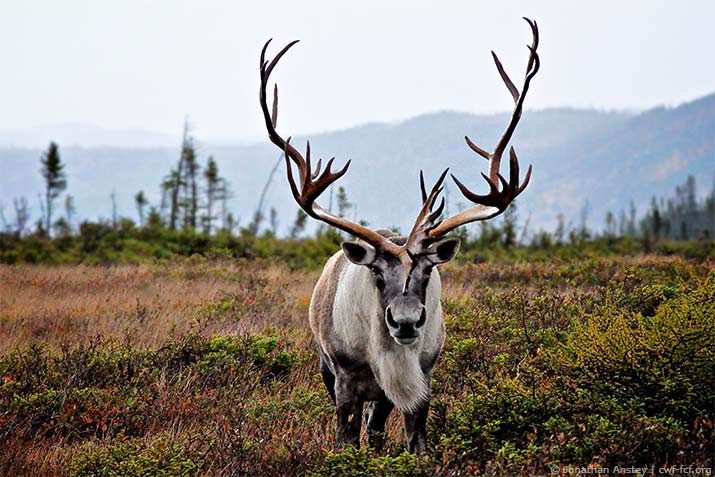May 8, 2012
Jerika Bradford

The woodland caribou can be found throughout much of the boreal and northern forests of British Columbia and as far as Newfoundland and Labrador and the Yukon Territory. The woodland caribou is larger than all other caribou populations in Canada, so it goes without saying that grub is important to these mammals. During the warm months, they chow down on greens, flowers and mushrooms, but when the cold front hits they are primarily reliant on lichens.
A current threat facing many woodland caribou populations in British Columbia is the impact of the mountain pine beetle epidemic on the boreal forest and its terrestrial lichens floor forage that started in the 1990s. The mountain pine beetle is native to western North American forests and only infests mature pine trees that are 80 to 100 years old. Terrestrial lichens once grew best in these mature pine forests, but this is not the case anymore. Since the mountain pine beetle epidemic in B.C., caribou numbers in Tweedsmuir-Entiako have been declining, and it’s believed to have something to do with the decline in terrestrial lichen growth due to the epidemic. The Canadian Wildlife Federation is funding research to better assess the mountain pine beetle epidemic’s effect on the boreal forest’s floor forage. The research primarily focuses on lichens, the woodland caribou’s main survival grub during winter.
The Canadian Wildlife Federation’s Endangered Species Program has granted $8,000 to the Bulkley Valley Centre for Natural Resources Research and Management’s project to assist in their 2012 field and data analysis work, led by D. Cichowski, the centre’s ecological consultant. The research will be taking place in Tweedsmuir-Entiako, B.C.
How Cichowski’s Research Fits In
Researchers from the Bulkley Valley Centre for Natural Resources Research and Management initiated a project in 2001, studying and measuring the effects of the mountain pine beetle epidemic on terrestrial lichen abundance. The terrestrial lichen abundance ultimately affects the caribou in the Tweedsmuir-Entiako region because they depend on these winter meals to survive the cold.
The results showed that from 2001 to 2007, terrestrial lichen growth declined in response to a growth in kinnikinnick, a native ground-cover plant. The problem is that kinnikinnicks are outgrowing lichens. Lichens use to be abundant in the mature pine forest before the mountain pine beetle epidemic. This, along with habitat destruction and hunting, has led the woodland caribou to be listed as Threatened in the Southern Mountains National Ecological Area, including the Tweedsmuir-Entiako range, under the federal Species at Risk Act (SARA).
But there’s good news!
Researchers have observed a decrease in kinnikinnick growth since 2007, and they believe that terrestrial lichen may be starting to increase again.
This is where the CWF’s funding to the Bulkley Valley Centre for Natural Resources Research and Management project comes into play. Researchers will study the effects of the mountain pine beetle epidemic on caribou terrestrial forage lichens in the Tweedsmuir-Entiako region epidemic. They will also assess whether kinnikinnick growth has declined since 2007 and whether terrestrial lichens are starting to recover from the beetle-killed stands. The research will involve re-measuring lichen abundance, competing vegetation abundance, stand structure, regeneration and coarse woody debris within the caribou winter range.
With this project, researchers hope to address a few key concerns such as the important knowledge gap between terrestrial lichen (caribou winter forage) and competing forest floor vegetation abundance following the mountain pine beetle epidemic. They also hope to gain a better understanding of the impact on caribou and collect information to be used for conserving and managing caribou and their habitat both in the Tweedsmuir-Entiako region and in other areas affected by the mountain pine beetle epidemic.
- 0

